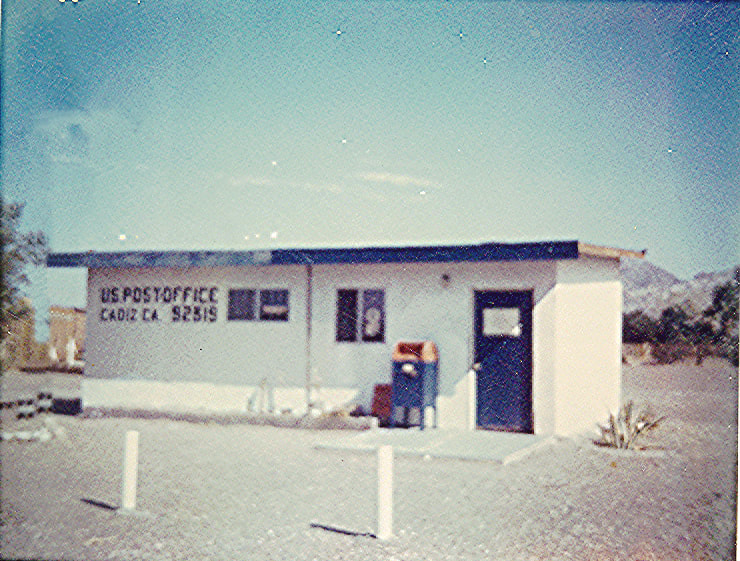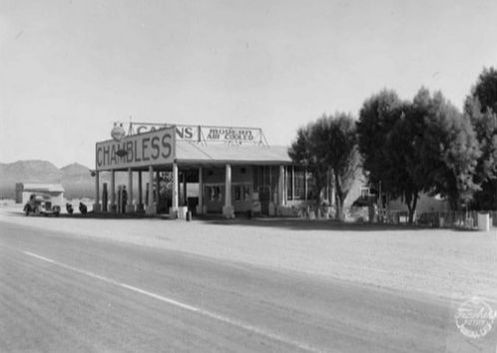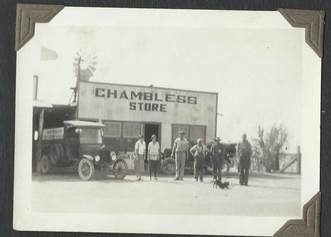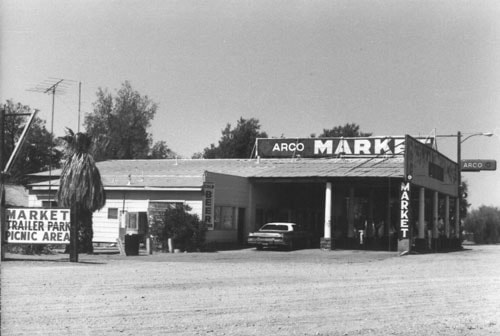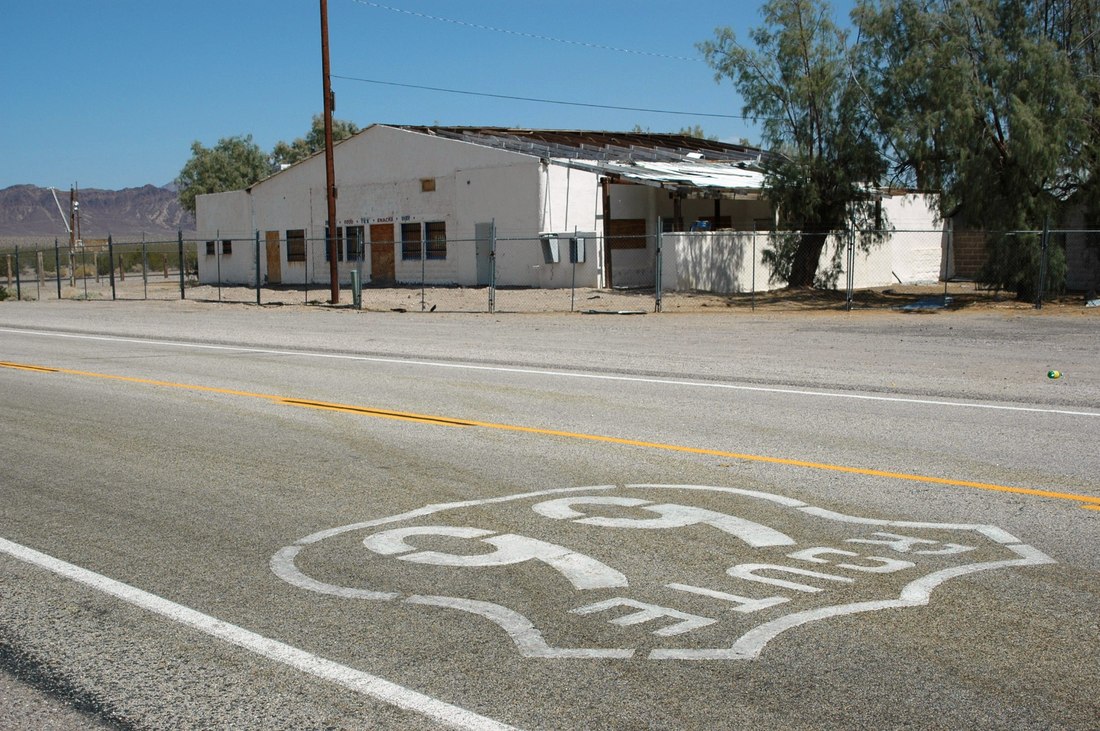Long 115° 32.6631’ W.
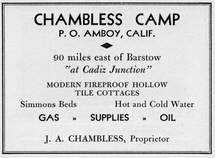
Today the small settlement of Chambless stands on National Trails Highway and bears little resemblance to the busy intersection it once was. The most prominent landmark is an abandoned service station and general store surrounded by a chain link fence and with boarded up motel cabins in the rear. There are some homes in the area, only a few of which have permanent residents.
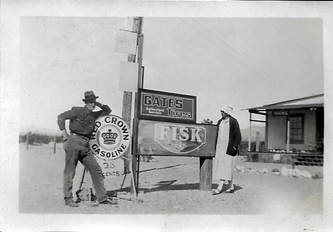 Jim and Fannie Chambless circa 1926 at their original home and Red Crown service station on what was then designated National Old Trails Road.
Jim and Fannie Chambless circa 1926 at their original home and Red Crown service station on what was then designated National Old Trails Road. Jim [James Albert] Chambless was a native of Portales, New Mexico, and came to California in the early 1900s. He built a service station on the dirt road that was then called National Old Trails Road, later renamed as Route 66.
When Route 66 was paved and realigned to where it is now, Jim and Fannie’s service station was left stranded on the old road about a half mile north of the new highway so, in the 1930s, they moved their store to the new location on the main highway.
The new store cost about $7,000 to build and was run by Jim and Fannie with help from one of Fannie’s friends, Mrs. McRae, from Long Beach. There was no electricity at the time, so they had a small generator on the back porch that ran off a Chevrolet engine. Chambless was not connected to the rural electric grid until 1964. For water, Jim drilled a well on the property using piping and machinery from the Orange Blossom Mine north of Bagdad, which was in bankruptcy at the time and was in the process of being abandoned.
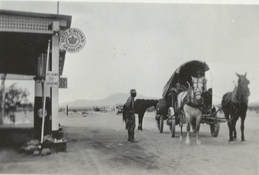 Chambless service station after being rebuilt on Old National Trails Road. Circa 1930.
Chambless service station after being rebuilt on Old National Trails Road. Circa 1930. | By the time that the post office was relocated from the Cadiz depot to Chambless the Chambless family were no longer there. Andrea did not want to go through all of the paperwork changing the name of the post office to Chambless and so she just kept the name ‘Cadiz’ and the same zip code. Consequently, even to this day local area residents refer to Chambless Junction as “Cadiz” because it was the location of the Cadiz Post Office. The small stucco building on the north side of the highway in Chambless that once served as the post office was later converted to a residence after the post office closed, is still there but is unoccupied and in disrepair. Andrea served as postmaster from 1966 until she retired to Twentynine Palms in 1995. |
The store was expanded over the years to include several improvements and somewhere along the lines the owners added motel cabins on the south and east side of the store. Most of the cabins behind the store are gone, but the ones to the east were more robust and are still there but are completely abandoned.
Even after Interstate-40 was opened in the early 1970s the Chambless store and gas station remained open because people in The San Diego and Palm Springs area of California realized that they could get to the casinos in Laughlin easier by going through Twentynine Palms and Amboy, and via Chambless, than by using I-15 and I-40. That continued for a few years, but eventually the Chambless store suffered the fate of all of the other businesses along old Route 66 that depended on highway travelers and was forced to close as traffic dwindled.

